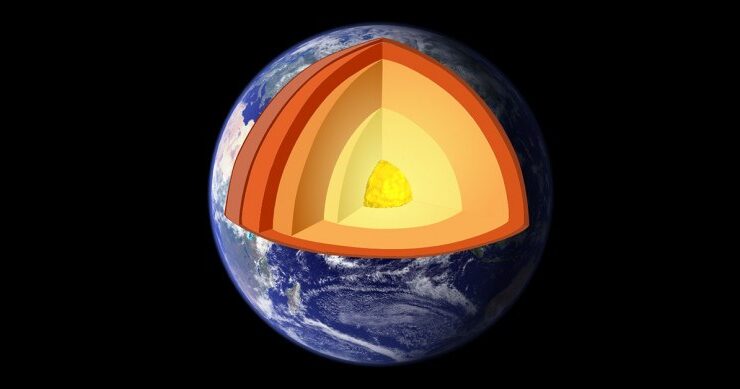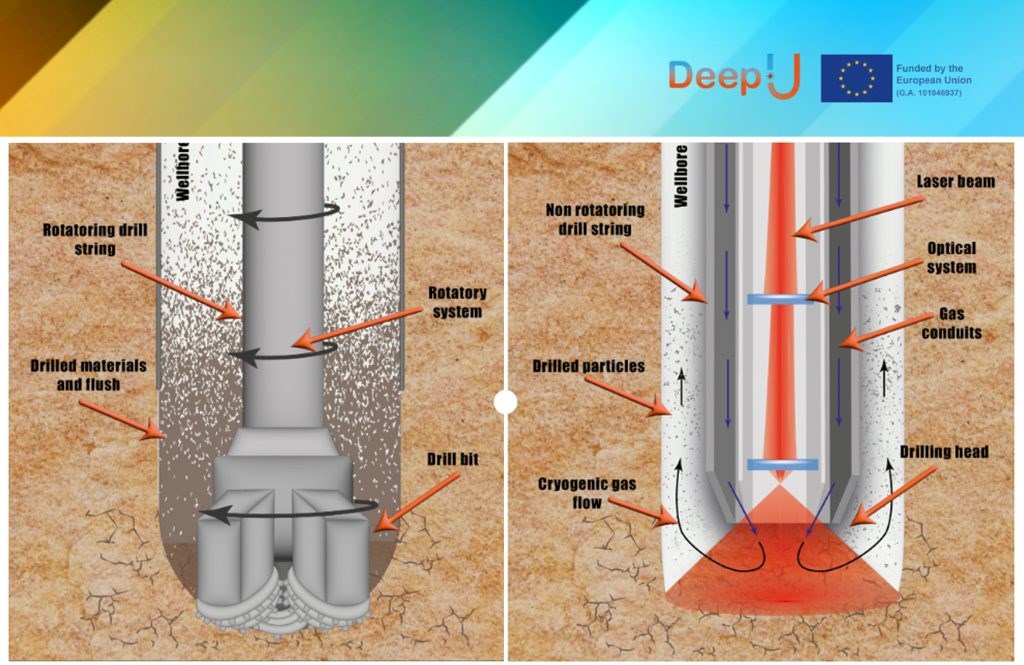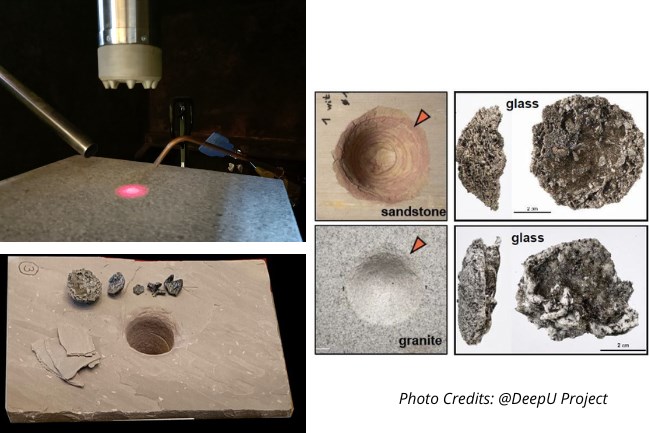

Accessing the vast energy reserves deep within the Earth’s crust could potentially fulfill all our energy demands. However, conventional mechanical drilling methods fall short in reaching these depths. Enter DeepU, a pioneering initiative funded by the European Union, which is spearheading the development of advanced laser excavation technology to bridge this gap. Once deemed science fiction, the concept of using lasers for underground excavation is rapidly becoming a reality. The project has achieved remarkable excavation rates of up to 20 meters per hour, particularly in challenging rock formations like dense granite.

In this innovative system, the laser’s intense heat causes the rock to both melt and vaporize, while micro-explosions disintegrate the rock into minute fragments. These fragments are then efficiently transported to the surface using supercooled, pressurized nitrogen gas. A fascinating byproduct of the laser’s extreme heat is the formation of a glassy layer, approximately 1 cm thick, that lines the well, providing structural integrity without the need for additional metal reinforcements.

The laser-based excavation system boasts a significant advantage: uninterrupted operation. Traditional mechanical drills suffer wear and tear, necessitating periodic retrieval for maintenance, which becomes increasingly time-consuming and costly as depth increases. In contrast, the laser system operates with a stationary energy source and a series of lenses and laser apparatus positioned at the wellhead. This setup allows the laser to penetrate from above, enabling continuous excavation without the need for descending equipment.
As depth increases, so does the temperature of subterranean rocks. This geothermal heat can be harnessed to heat water circulated through closed-loop piping systems. The heated water is then brought to the surface to generate electricity or provide heating. Once cooled, the water is recirculated, perpetuating this sustainable cycle.
Initiated three years ago, the project has achieved an excavation speed ranging from 5 to 15 meters per hour. While optimal results have been observed in hard rocks like granite, softer materials like limestone have posed challenges. A temperature of approximately 700 °C has been identified as the most efficient for laser excavation. As the technology matures, excavation speeds are projected to reach 30 meters per hour, significantly outperforming traditional methods by a factor of ten. Moreover, the economic benefits are substantial; especially for deep excavations, costs per meter are anticipated to decrease to a quarter of current mechanical methods, approximately €1,000.
Although the primary aim of this project is not to produce a commercial product, it focuses on testing laser excavation technology across various wavelengths, rock types, and fluid mediums for debris transport. Nonetheless, these groundbreaking studies are poised to lay the groundwork for future commercial ventures or innovative projects.
SİGORTA
3 saat önceBİLGİ
3 gün önceSİGORTA
3 gün önceBLOG
6 gün önceSİGORTA
9 gün önceSİGORTA
12 gün önceSİGORTA
21 gün önceSİGORTA
21 gün önceBLOG
21 gün önceBLOG
21 gün önce 1
DJI Mini 5: A Leap Forward in Drone Technology
19596 kez okundu
1
DJI Mini 5: A Leap Forward in Drone Technology
19596 kez okundu
 2
xAI’s Grok Chatbot Introduces Memory Feature to Rival ChatGPT and Google Gemini
14011 kez okundu
2
xAI’s Grok Chatbot Introduces Memory Feature to Rival ChatGPT and Google Gemini
14011 kez okundu
 3
7 Essential Foods for Optimal Brain Health
12901 kez okundu
3
7 Essential Foods for Optimal Brain Health
12901 kez okundu
 4
Elon Musk’s Father: “Admiring Putin is Only Natural”
12754 kez okundu
4
Elon Musk’s Father: “Admiring Putin is Only Natural”
12754 kez okundu
 5
Minnesota’s Proposed Lifeline Auto Insurance Program
10634 kez okundu
5
Minnesota’s Proposed Lifeline Auto Insurance Program
10634 kez okundu
Sigorta Güncel Sigorta Şikayet Güvence Haber Hasar Onarım Insurance News Ajans Sigorta Sigorta Kampanya Sigorta Ajansı Sigorta Sondakika Insurance News